Ertach Kernow - Cornish Celtic Way: saints' trails through Cornwall
Saints trails throughout Cornwall have become popular not just for local people, but also for visitors. I was reminded of this by a chance telephone call from Jed a young Cornishman living in London. Born in Cornwall he was now carrying out a walk along the Cornish Celtic Way and called into Newquay Museum to receive his passport stamp. Although I wasn’t there he called to ask about receiving his stamp electronically. No problem. Jed was walking via his birthplace at Launceston through Cornwall and ending up at Marazion, in the past known as Market Jew. What was so encouraging was the interest Jed had for Cornwall and its Celtic historic and cultural roots although now living in England. He is not alone, and there are thriving Cornish communities people of all ages engaging in celebrating Cornish and Celtic culture including Cornwall’s own St Piran’s national day. I’m pleased to say Jed signed up to be the first new member of the ‘Celtic Nation Kernow’ group the progressive name for Celtic Congress Cornwall as it moves to encourage younger people through modern technological communication.
We’ll find out how successfully Jed was on his journey through Cornwall in due course, but this is an opportunity to look at the original saints trails in Cornwall. Stories like this emphasise the importance of Cornish culture and heritage to Cornwall’s economy bringing many people beyond the normal mass tourism of the peak season. Fortunately, many towns and villages throughout Cornwall appreciate this and support their local heritage organisations.
As always click the images for larger view
The Cornish Celtic Way runs from St Germans Priory in the east through Cornwall and ending up at St Michael’s Mount. This modern Cornish itinerary includes the historic routes taken by medieval pilgrims ending at Santiago de Compostela in Galicia, in northern Spain. Many pilgrims from Wales would have crossed the Bristol Channel through to north Cornwall taking a route across Cornwall depending on where they landed and their harbour of departure. These original medieval pilgrim routes are better known today as The Saints Way covering the route between the place of landing in Padstow and Fowey where they would have departed for northern Spain. Alternatively, the pilgrim pathway now known as St Michaels Way between Lelant, once a considerable harbour, and St Michael’s Mount where pilgrims would have taken ship from Marazion then known as Market Jew.
This modern construct is a new pilgrimage route covering 125 miles through Cornwall with today’s Cornish Celtic Way including both medieval routes by zig-zagging across Cornwall twice. No doubt there were other routes taken by those earlier pilgrims, but The Saints Way and St Michael’s Way seem to be the most likely ones for those times. Pilgrims from England would have likely taken ship from one of the many English south coastal ports to northern Spain.
The authors of the book promoting this new Cornish Celtic Way and passport covering this route that ‘the aim of the Cornish Celtic Way is to aid people of all ages who are interested in spirituality to explore faith in a different way. We believe that having faith isn’t about just going to a place of worship – it’s about getting out and experiencing it in everyday life as well and taking it into your own hands. We hope that the Cornish Celtic Way will develop spiritual growth and personal reflection through stories of the Celtic Saints, Cornwall’s rich history, incredible landscape and the people and communities that will be encountered along the way.’ Lovely. No doubt many people will find this journey spiritual, but for most travellers what cannot be denied will be enjoyment of Cornwall’s wonderful environment and scenery, historic sites visited and interaction with Cornish people they will encounter along the way creating a lasting memory to be treasured.
Making their way from the great Norman church and former priory at St Germans, the site of Cornwall’s cathedral until 1050, travellers follow the Cornish Celtic Way down to Fowey on the south Cornish coast. A route best covered in a future article. Turning north at Fowey the journey takes in probably the best-known saints trail across the width of Cornwall towards Padstow, this the route medieval pilgrims would likely have taken returning to Wales retracing their earlier outward journey. Besides St Fimbarrus Church at Fowey vying for dominance next to Place House there are a number of churches to visit in smaller villages along the way. These include the church of St Nivet at Lanivet which has a 5th or 6th century inscribed pillar stone as well as two further 10th and 13th crosses. Also on route is St.Benets Abbey and the church of St Clement at Withiel. Described by Nikolaus Pevsner, as one of the architectural highlights of Cornwall is St Petroc Minor Church at Little Petherick. In Padstow there is the historically important St Petrock's Church which at one time held the bones of the saint before they were later moved to Bodmin as they were endangered by raiding Northmen.
Along the North Cornish coast between Padstow and Lelant, the official beginning of the St Michaels Way there is some terrific coastal scenery between settlements. After Padstow, Harlyn Bay the former site of great archaeological interest through the village of St Merryn and its church with its somewhat stubby tower and interesting timber wagon roofs. Then passing through Treyarnon and Porthcothan with lovely coastal views to the somewhat lonely St Eval Church with its high tower valued in the past by ships captains as a marker and many RAF memorials including the stunning stained-glass window. Then St Mawgan with its historic church and abbey which have already been mentioned in some detail in a recent Ertach Kernow article. Passing along Watergate Bay and Newquay with its many and varied beaches the traveller will come to the church at Crantock. A village with a big history and with a church of much interest, including through the restoration work of architect Edmund H. Sedding and the woodcarving of the renowned Pinwell sisters. Not far then to Cubert with its strangely towered church and ancient inscribed stone built into the tower base. A trek across the sands towards Perranporth taking in St Piran’s Old Church, 9th century cross and the ancient St Piran’s Oratory is a must. Again, much has already been written about these previously. The third St Piran’s Church at Perranzabuloe is a little out of the way, but a detour may be of interest.
After Perranporth next is St Agnes having a church with apparently facilities for ‘pilgrims’ to crash out there overnight at reasonable cost. Again, a village with an interesting history including its lost harbour and railway line. It has a small very well-respected museum well worth visiting. There then follows many miles of wonderful views, steep cliffs, engine houses and mine remnants at Wheal Coates, and the lighthouse at Godrevy. Churches at Gwithian, Phillack and Hayle follow in quick succession and a topic for another day before the Church of St Uny is reached and the start of St Michaels Way.
This trail crossing Cornwall was one of the medieval routes taken to reach Marazion by Welsh and Irish pilgrims wanting to avoid the perilous sea trip around Land’s End. It is about 13 miles in length from Lelant to St Michael’s Mount off Marazion, a nice bite size walk taking in some wonderful parts of Cornwall. St Uny Church at Lelant with its three aisles has features which indicate its original Norman construction, its wagon timber roof also shows historic bosses. The churchyard has a selection of interesting crosses. From St Uny the trail briefly turns north following the coastline around the seaward side of Carbis Bay then turning south before reaching St Ives. Rural countryside leads to Trencrom Hill with its ancient Iron Age hillfort offering the traveller fantastic 360-degree views of Cornwall and both north and south coasts. Legends tells us Trencrom was the home of giants, but now its 63 acres are the preserve of the National Trust donated by Lt Col C L Tyringham in 1946 to be held as a memorial to Cornish heroes who died serving their country during two world wars. What a wonderful gift to remember them and for the people of Cornwall and visitors to enjoy.
Next major stop is the village of Ludgvan, historic enough to be mentioned in Domesday. St Paul’s Church dating to the 14th century replaced an earlier building but is perhaps more famous for being where Dr William Borlase preached as rector during the 18th century and where he is buried in the chancel of the church. There is a memorial stone to Dr Borlase and also a plaque to the parents of Sir Humphry Davy who was an early resident of Ludgvan. His own instructions were that he be buried where he died, so Sir Humphry lies in Geneva. Approaching the end of the journey the next stop is Gulval with its 12th century church sporting a 15th century tower. Much of its earlier interior has been shall we say ‘Victorianised’ with 19th century restoration, the historian Charles Henderson writing that ‘’its interest and antiquity have fled before the invading forces of modern munificence’. However, it is an interesting place within attractive grounds. Then to Marazion with its relatively modern Victorian church completed and consecrated in 1861 with seventeen beautiful stained-glass windows. Marazion was covered by an Ertach Kernow article in December 2022 and can be found on the website.
With just the causeway or a boat crossing left, depending on the tides, the medieval pilgrim or modern traveller reaches the end of their journey with the magnificent St Michael’s Mount towering up before them. What a wonderful tour of Cornwall and for many yes it would be a spiritual journey.

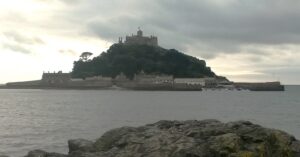
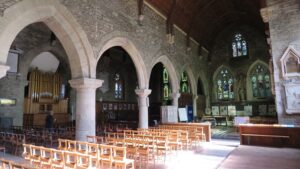
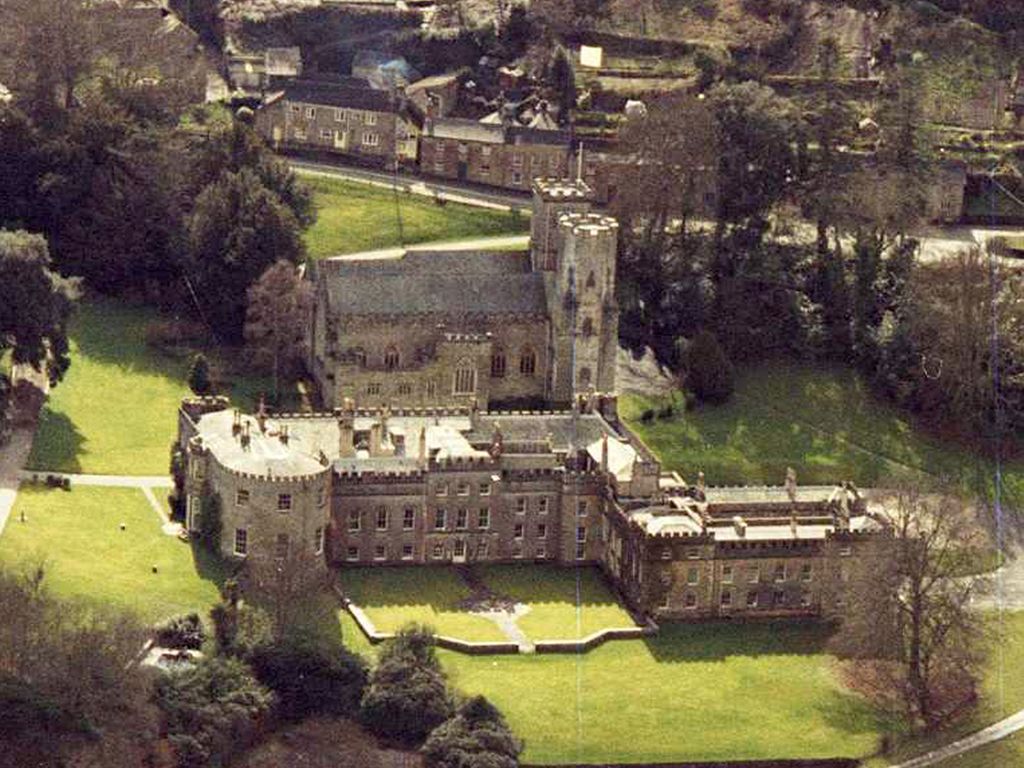


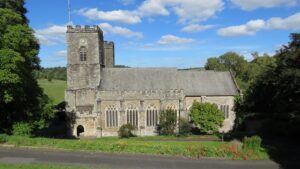
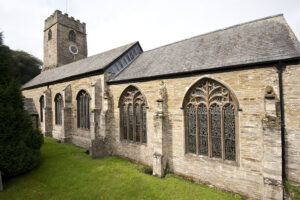
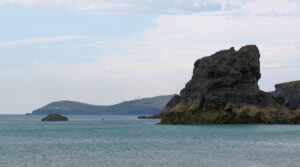
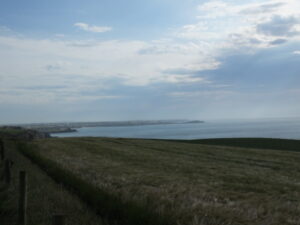
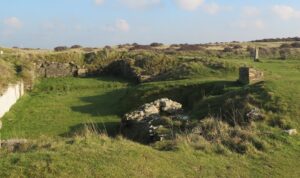
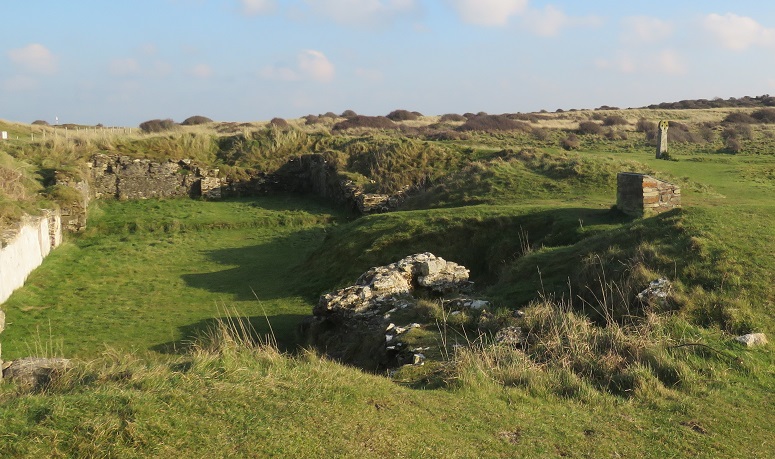

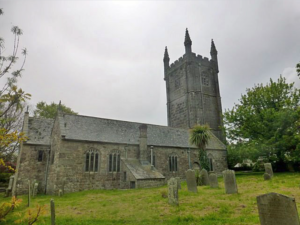
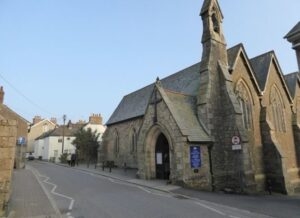
![Ertach Kernow - Celtic saints trails found throughout Cornwall [1] Celtic saints trails found throughout Cornwall](https://www.cornwallheritage.com/wp-content/uploads/2024/05/Ertach-Kernow-Celtic-saints-trails-found-throughout-Cornwall-1-259x300.jpg)
![Ertach Kernow - Celtic saints trails found throughout Cornwall [2] Celtic saints trails found throughout Cornwall](https://www.cornwallheritage.com/wp-content/uploads/2024/05/Ertach-Kernow-Celtic-saints-trails-found-throughout-Cornwall-2-259x300.jpg)
![[201] Ertach Kernow Heritage Column - 1st May 2024 - Celtic Nation Kernow marking Cornish identity anniversary Ertach Kernow Heritage Column - 1st May 2024 - Celtic Nation Kernow marking Cornish identity anniversary](https://www.cornwallheritage.com/wp-content/uploads/2024/04/201-Ertach-Kernow-Heritage-Column-1st-May-2024-Celtic-Nation-Kernow-marking-Cornish-identity-anniversary-300x295.jpg)